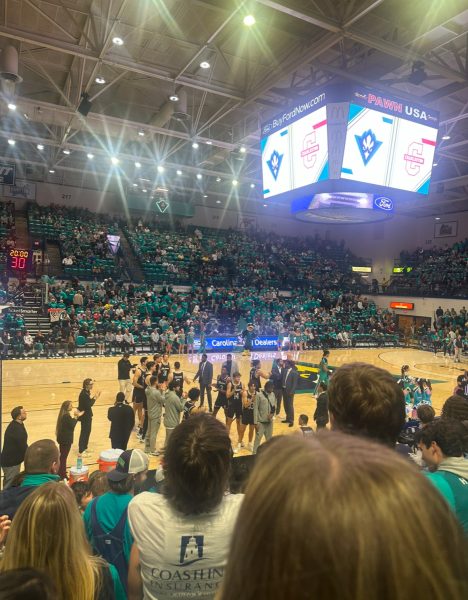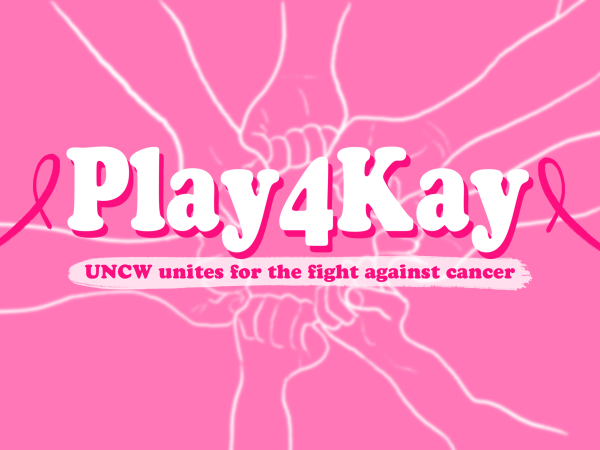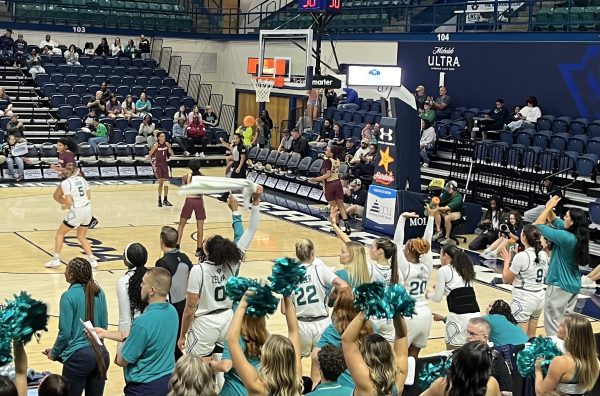Sticks and Stones: A winter sport in a summer town
John Wojciechowski, the architect, peers down toward the other end of the rink. It’s cold on the ice of the Wilmington Ice House, but not unbearably so. His right arm is pointed straight out, giving all the direction needed without saying a single word; nothing needs to be said, not yet anyway. Silence sits heavy on the ice, setting the mood with the help of the plexiglass walls that seclude the rink from the rest of the facility.
Then, there’s movement. Action cuts through the stillness like a sharp knife and the walls that once kept the noise out now act to amplify it, echoing every shout, sweep, and shuffle of rubber souls on hard ice.
The stone has been thrown.
____
Curling was first played in Scotland, and the origins of the sport trace back to the mid 1500’s. It began as a game played on frozen rivers and lakes; the stones used back then were river stones, flattened at the bottom by the current. The term “curling” comes from the fact that, as the stone travels down the ice, it tends to naturally curl to the right or the left.
Today, curling is played on a long stretch of ice known simply as a sheet. Those giant targets on either side? Those are called Houses, and the smaller rings inside the House are known as buttons. Traditionally, each team—consisting of four players: the lead, the second, the third, and the skip—gets to throw eight stones per round. That round is known as an “end.”
The amount of ends played varies with the level of competition, but Olympic curling consists of 10 ends. After a single end, whichever team has their stone closest to the center of the House is awarded the point. Naturally, whoever has the most points after all 10 ends is the winner.
Traditionally known as a winter sport, curling found its way to the beaches of Wilmington in August 2011, when the Coastal Carolina Curling Club was formed. Wojciechowski, who serves as one of the club’s organizer, stumbled on the sport while talking to some friends who were interested in playing another popular ice sport.
“I knew a handful of people who played hockey down here,” Wojciechowski said, “and through them I heard about a ‘Learn to Curl’ session that was going on at the Ice House. I thought it would be cool, so I went and gave it a shot.”
There, he met a handful of others from around the area with the same interest in the little-known sport. There, he met Betty Feezor, the pediatrician who can sling stones with the best of them, even with a bad knee that doesn’t let her to kneel when throwing. There, he met George Sheppard, the dentist who decided to give curling a shot in memory of a quadriplegic friend who had expressed an interest in the sport before passing away in 2002.
“I play the game simply because it’s fun,” Feezor said. “It’s a lot of fun sliding those stones down ice. While there’s certainly a competitive aspect to the game, it’s also such a social and friendly sport.”
The level of camaraderie involved with the sport takes you by surprise at first. In an age where sports, even at the lowest level, have become hyper-competitive, curling remains immune to the throng of over-caffeinated soccer moms and dads living vicariously through their preteens. Perhaps it’s the cold that keeps them away.
“That’s what’s so great about the [CCCC],” Wojciechowski said, “it appeals to a wide range of people for many reasons. Whether it’s the athletic aspect, the competition, or the social side, Curling has something for everyone.”
The club rents out ice time as often as possible, usually two or three times a month, to come together for a couple of hours and curl. They host “Learn to Curl” sessions: two hour classes that cover all the bases that one may need to not look like a fool on the ice. Most still do. They teach people of all ages how to throw the stone, sweep the ice, and end with a friendly game and open invitation to go “broom-stacking,” a term used endearingly to describe socializing at the nearest bar. Winners buy the first round.
“That’s half the fun of curling,” Sheppard said. “While it may be easy to learn, it takes a very long time to get good at. What’s great about our club is that after our ice time, win or lose, we’re all going to go socialize somewhere.”
Anita Dingler, another curling fanatic who helps organize the “Learn to Curl” sessions, was hooked the moment she came off the ice for the first time.
“I’ve been doing this consistently for almost two years,” Dingler said. “I came out and tried it once and have been coming back since. It’s a lot of fun, but the friendships I’ve made are what really keep me coming back.”
The club is actively trying to recruit a younger crowd, and they’re currently working on ideas for a UNCW student night. The idea would be to get enough students interested in curling, something they don’t see as a problem, to form a Curling Club on campus. In a few weeks they’ll be hosting a “Curling Olympics,” a multi-team competition where each team is assigned a different country. Within an hour of their most recent “Learn to Curl” being completed, all the teams had been filled.
____
Wojciechowski, the skipper, now yells in sharp, quick fragments as the stone barrels down the ice.
“YES. YES. SWEEP. WOAH. STOP NOW. STOP.”
The stone has been thrown too hard, and it flies past the house, colliding with a heavy thud against the back wall. Smiling, Wojciechowski runs to retrieve it and starts setting up the next throw. He meets up with the young lady who overthrew it and gives her a high five.
“You looked a lot better there,” Wojciechowski said, “I think you’re finally getting the hang of it.”






